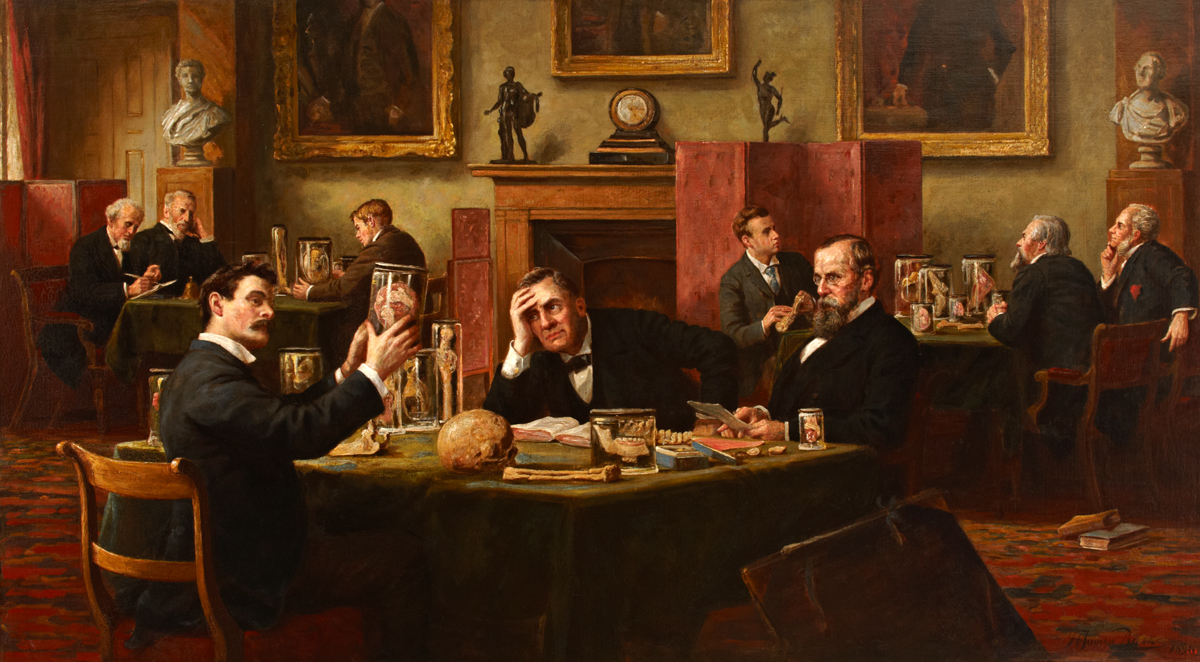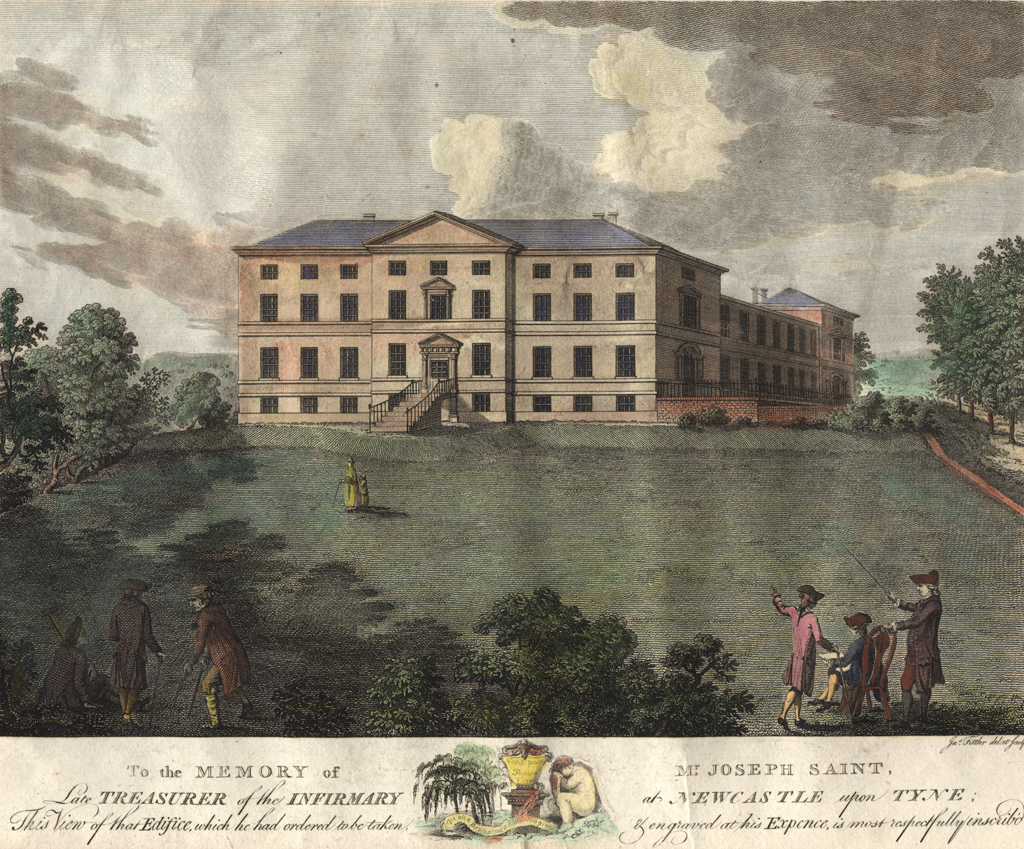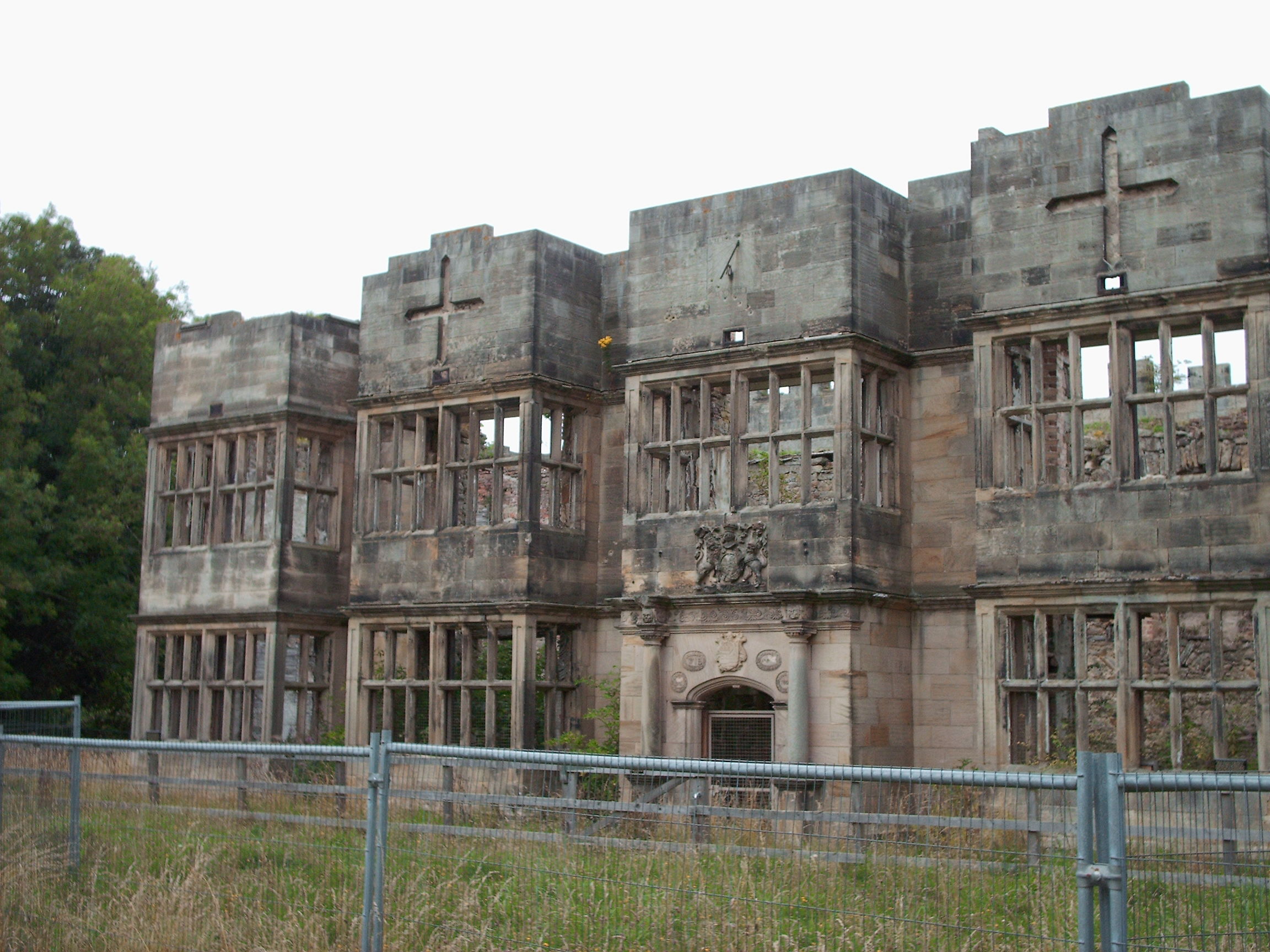|
John Snow (physician)
John Snow (15 March 1813 – 16 June 1858) was an English physician and a leader in the development of anaesthesia and medical hygiene. He is considered one of the founders of modern epidemiology, in part because of his work in tracing the source of a cholera outbreak in Soho, London, in 1854, which he curtailed by removing the handle of a water pump. Snow's findings inspired the adoption of anaesthesia as well as fundamental changes in the water and waste systems of London, which led to similar changes in other cities, and a significant improvement in general public health around the world. Early life and education Snow was born on 15 March 1813 in York, England, the first of nine children born to William and Frances Snow in their North Street home, and was baptised at All Saints' Church, North Street, York. His father was a labourer who worked at a local coal yard, by the Ouse, constantly replenished from the Yorkshire coalfield by barges, but later was a farmer in a ... [...More Info...] [...Related Items...] OR: [Wikipedia] [Google] [Baidu] |
York
York is a cathedral city with Roman origins, sited at the confluence of the rivers Ouse and Foss in North Yorkshire, England. It is the historic county town of Yorkshire. The city has many historic buildings and other structures, such as a minster, castle, and city walls. It is the largest settlement and the administrative centre of the wider City of York district. The city was founded under the name of Eboracum in 71 AD. It then became the capital of the Roman province of Britannia Inferior, and later of the kingdoms of Deira, Northumbria, and Scandinavian York. In the Middle Ages, it became the northern England ecclesiastical province's centre, and grew as a wool-trading centre. In the 19th century, it became a major railway network hub and confectionery manufacturing centre. During the Second World War, part of the Baedeker Blitz bombed the city; it was less affected by the war than other northern cities, with several historic buildings being gutted and restore ... [...More Info...] [...Related Items...] OR: [Wikipedia] [Google] [Baidu] |
1826–1837 Cholera Pandemic
The second cholera pandemic (1826–1837), also known as the Asiatic cholera pandemic, was a cholera pandemic that reached from India across Western Asia to Europe, Great Britain, and the Americas, as well as east to China and Japan.Note: The second pandemic started in India and reached Russia by 1830, then spread into Finland and Poland. A two-year outbreak began in England in October 1831 and claimed 22,000 lives. Irish immigrants fleeing poverty and the Great Famine carried the disease from Europe to North America. Soon after the immigrants' arrival in Canada in the summer of 1832, 1,220 people died in Montreal and another 1,000 across Quebec. The disease entered the U.S. by ship traffic through Detroit and New York City. Spread by ship passengers, it reached Latin America by 1833. Another outbreak across England and Wales began in 1848, killing 52,000 over two years. Cholera caused more deaths, more quickly, than any other epidemic disease in the 19th century . The med ... [...More Info...] [...Related Items...] OR: [Wikipedia] [Google] [Baidu] |
Royal College Of Surgeons Of England
The Royal College of Surgeons of England (RCS England) is an independent professional body and registered charity that promotes and advances standards of surgical care for patients, and regulates surgery and dentistry in England and Wales. The College is located at Lincoln's Inn Fields in London. It publishes multiple medical journals including the '' Annals of the Royal College of Surgeons of England'', the ''Faculty Dental Journal'', and the ''Bulletin of the Royal College of Surgeons of England''. History The origins of the college date to the fourteenth century with the foundation of the "Guild of Surgeons Within the City of London". Certain sources date this as occurring in 1368. There was ongoing dispute between the surgeons and barber surgeons until an agreement was signed between them in 1493, giving the fellowship of surgeons the power of incorporation. This union was formalised further in 1540 by Henry VIII between the Worshipful Company of Barbers (incorporat ... [...More Info...] [...Related Items...] OR: [Wikipedia] [Google] [Baidu] |
Westminster Hospital
Westminster Hospital was a hospital in London, England, founded in 1719. In 1834 a medical school attached to the hospital was formally founded. In 1939 a newly built hospital and medical school opened in Horseferry Road, Westminster. In 1994 the hospital closed, and its resources were moved to the new Chelsea and Westminster Hospital at the old St Stephen's Hospital site in Fulham Road. History Foundation The Westminster Hospital was established in 1719 as a charitable society "for relieving the sick and needy at the Public Infirmary in Westminster", and promoted by Henry Hoare (1677–1725), otherwise "Good Henry", son of Sir Richard Hoare and a partner in Hoare's Bank, and his associates the writer William Wogan, a vintner called Robert Witham, and the Reverend Patrick Cockburn. In 1719, a house was rented in Petty France, to accommodate the new Infirmary for the Sick and Needy, which opened in 1720 with 10 beds. The following document, which may be styled the fi ... [...More Info...] [...Related Items...] OR: [Wikipedia] [Google] [Baidu] |
Thomas Michael Greenhow
Thomas Michael Greenhow MD MRCS FRCS (5 July 1792 – 25 October 1881) was an English surgeon and epidemiologist. Career Greenhow was the second son of Edward Michael Greenhow, an army surgeon of North Shields, Tynemouth. He was a medical graduate of the University of Edinburgh and became M.R.C.S. (London) in 1814, having been a surgery student at London's Guy's and St Thomas's Hospital. Greenhow spent much of his working life in Newcastle. He and fellow surgeon Sir John Fife are recorded together in 1827 as being ''Eminent Persons of Newcastle and Gateshead''. Greenhow's surgical inventions were heralded by London surgeons in the 1830s. ''Debretts'' records that Greenhow was a Fellow of the Royal College of Surgeons of England, having become, in 1843, one of the original 300 fellows. Greenhow worked in all areas of surgery and had a particular interest in obstetrics and gynaecology; in 1845, he controversially published detailed accounts regarding ... [...More Info...] [...Related Items...] OR: [Wikipedia] [Google] [Baidu] |
Newcastle Infirmary
The Royal Victoria Infirmary (RVI) is a 673-bed tertiary referral hospital and research centre in Newcastle upon Tyne, England, with strong links to Newcastle University. The hospital is part of the Newcastle upon Tyne Hospitals NHS Foundation Trust and is a designated academic health science centre. History The original hospital was the Newcastle upon Tyne Infirmary at Forth Banks which was funded by way of public subscription. The foundation stone was laid by Joseph Butler, the Bishop of Durham, on 5 September 1751 and it opened on 8 October 1752. By the end of the 19th century, despite major extensions including the Dobson Wing which opened in 1855 and the Ravensworth Wards which opened in 1885, the infirmary became overcrowded and needed to be replaced. A new hospital to be known as the Royal Victoria Infirmary was designed by William Lister Newcomb and Percy Adams and built on of Town Moor given by the Corporation and Freemen of the City of Newcastle upon Tyne. It was o ... [...More Info...] [...Related Items...] OR: [Wikipedia] [Google] [Baidu] |
Great Windmill Street
Great Windmill Street is a thoroughfare running north–south in Soho, London, crossed by Shaftesbury Avenue. The street has had a long association with music and entertainment, most notably the Windmill Theatre, and is now home to the Ripley's Believe It or Not! museum and the Trocadero shopping centre. Early history The street took its name from a windmill on the site which was recorded 1585 and demolished during the 1690s. In a parliamentary survey of 1658 the mill was described as "well fitted with Staves and other materials". The area was developed around 1665 but the building was speculative and of poor quality; this led to a royal proclamation in 1671 that prohibited unlicensed development in "Windmill Fields, Dog Fields and Soho". Later that year, Thomas Panton, one of the original speculators, was granted a licence to continue his scheme with the condition that it was supervised and directed by Sir Christopher Wren who was the Surveyor General of the King's Works. ... [...More Info...] [...Related Items...] OR: [Wikipedia] [Google] [Baidu] |
John Hunter (surgeon)
John Hunter (13 February 1728 – 16 October 1793) was a British surgeon, one of the most distinguished scientists and surgeons of his day. He was an early advocate of careful observation and scientific method in medicine. He was a teacher of, and collaborator with, Edward Jenner, pioneer of the smallpox vaccine. He is alleged to have paid for the stolen body of Charles Byrne, and proceeded to study and exhibit it against the deceased's explicit wishes. His wife, Anne Hunter (''née'' Home), was a poet, some of whose poems were set to music by Joseph Haydn. He learned anatomy by assisting his elder brother William with dissections in William's anatomy school in Central London, starting in 1748, and quickly became an expert in anatomy. He spent some years as an Army surgeon, worked with the dentist James Spence conducting tooth transplants, and in 1764 set up his own anatomy school in London. He built up a collection of living animals whose skeletons and other organs he pr ... [...More Info...] [...Related Items...] OR: [Wikipedia] [Google] [Baidu] |
West Riding Of Yorkshire
The West Riding of Yorkshire is one of three historic subdivisions of Yorkshire, England. From 1889 to 1974 the administrative county County of York, West Riding (the area under the control of West Riding County Council), abbreviated County of York (WR), was based closely on the historic boundaries. The lieutenancy at that time included the City of York and as such was named West Riding of the County of York and the County of the City of York. Its boundaries roughly correspond to the present ceremonial counties of West Yorkshire, South Yorkshire and the Craven, Harrogate and Selby districts of North Yorkshire, along with smaller parts in Lancashire (for example, the parishes of Barnoldswick, Bracewell, Brogden and Salterforth became part of the Pendle district of Lancashire and the parishes of Great Mitton, Newsholme and Bowland Forest Low became part of the Ribble Valley district also in Lancashire), Cumbria, Greater Manchester and, since 1996, the unitary East Riding ... [...More Info...] [...Related Items...] OR: [Wikipedia] [Google] [Baidu] |
Pateley Bridge
Pateley Bridge (known locally as Pateley) is a small market town in Nidderdale in the Borough of Harrogate, North Yorkshire, England. Historically part of the West Riding of Yorkshire, it lies on the River Nidd. It is in the Yorkshire Dales and just outside the Yorkshire Dales National Park. The community has the oldest sweet shop in the world. Established in 1827, it is housed in one of the earliest buildings in Pateley Bridge, dating from 1661. Pateley Bridge is also the home of the Nidderdale Museum. The last Dales agricultural show of the year, the Nidderdale Show, is held annually on the showground by the River Nidd. The show attracts over 14,000 visitors each year. The town is within the Nidderdale AONB, an Area of Outstanding Natural Beauty. The town was listed in both the 2017 and 2018 ''Sunday Times'' reports on Best Places to Live in northern England. The local tourist authority bills it as "the perfect place to start your exploration of the Yorkshire Dales". Hi ... [...More Info...] [...Related Items...] OR: [Wikipedia] [Google] [Baidu] |
Burnopfield
Burnopfield is a village in County Durham, in England. It is situated north of Stanley and Annfield Plain, close to the River Derwent and is 564 feet above sea level. There are around 4,553 inhabitants in Burnopfield. It is located 7 miles from Newcastle upon Tyne and 15 miles from Durham. Etymology The name ''Burnopfield'' probably comes from the Old English meaning "field by the valley stream", although local legend says that the village got its name after an attempted Scottish invasion of England was foiled by literally ''burning up the fields'' to stop the advancing armies. In the 19th century, Burnopfield was usually referred to as ''the Leap'', or in local dialect, as ''the Loup'', after the area of Burnopfield named ''Bryan's Leap''. History Burnopfield was the site of a leper hospital, High Friarside Hospice, which was founded in 1312, but was demolished in approximately 1450. The remains of the original chapel can still be seen today. Other historical buildings in Bur ... [...More Info...] [...Related Items...] OR: [Wikipedia] [Google] [Baidu] |
Colliery
Coal mining is the process of extracting coal from the ground. Coal is valued for its energy content and since the 1880s has been widely used to generate electricity. Steel and cement industries use coal as a fuel for extraction of iron from iron ore and for cement production. In the United Kingdom and South Africa, a coal mine and its structures are a colliery, a coal mine is called a 'pit', and the above-ground structures are a ' pit head'. In Australia, "colliery" generally refers to an underground coal mine. Coal mining has had many developments in recent years, from the early days of men tunneling, digging and manually extracting the coal on carts to large open-cut and longwall mines. Mining at this scale requires the use of draglines, trucks, conveyors, hydraulic jacks and shearers. The coal mining industry has a long history of significant negative environmental impacts on local ecosystems, health impacts on local communities and workers, and contributes heavily to ... [...More Info...] [...Related Items...] OR: [Wikipedia] [Google] [Baidu] |
.jpg)



_(1677–1725)_by_Michael_Dahl.jpg)
.jpg)

.jpg)


